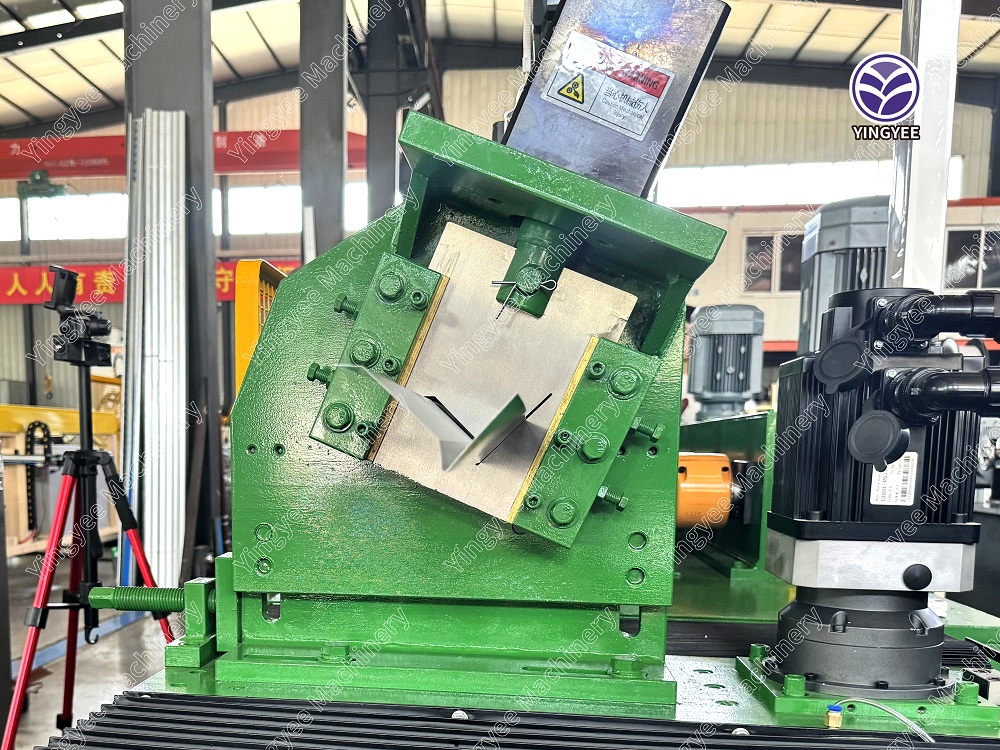
The Evolution of Stud Making Machines An Overview
In the world of manufacturing and metalworking, stud making machines play a critical role, especially in industries that require precision fasteners. These machines are designed to produce studs, which are essentially metal rods that are threaded on both ends and are widely used in construction, automotive, and aerospace applications. As technology has evolved, so too have stud making machines, incorporating automation, efficiency, and advanced materials to meet the growing demands of industry.
The Basics of Stud Making
Studs are used in a variety of applications, such as connecting two or more components or acting as a fixed anchor point. The production of studs involves several key processes, including wire feeding, cutting, threading, and sometimes surface treatment. Traditionally, these processes were performed manually or with simple machines. However, the need for higher production rates and precision has led to the development of specialized stud making machines that automate many of these tasks.
Types of Stud Making Machines
There are several types of stud making machines, each designed for specific needs. The most common types include
1. Cold Heading Machines These machines use a process called cold heading, where metal wire is formed into specific shapes at room temperature. This technique is beneficial because it retains the metal's strength and minimizes waste. Cold heading machines can produce various shapes, including hexagonal and round studs.
2. Threading Machines After the studs have been shaped, threading machines are used to create the required threads. This can be done using several methods, including rolling or cutting. The precision of these machines ensures that the threads meet industry standards and fit securely with nuts and other fasteners.
3. Automatic Stud Making Machines These are highly sophisticated machines that combine multiple processes into one. They can feed the wire, cut it to length, form it, and create threads with minimal human intervention. Automation not only increases production rates but also enhances the consistency and quality of the finished products.

The Role of Technology
The integration of technology has significantly transformed the manufacturing of studs. Computer Numerical Control (CNC) technology has enabled more precise and repeatable operations, allowing manufacturers to produce custom studs that meet specific requirements. Moreover, advancements in software have facilitated better design processes, enabling engineers to simulate and optimize the performance of stud making operations before physical production begins.
Robotics is another area that has made a significant impact. Automated handling systems can move materials and finished products with great efficiency, reducing the need for manual labor and minimizing the risk of errors. This not only speeds up production but also reduces the physical strain on workers, making the manufacturing environment safer and more efficient.
Sustainability in Stud Manufacturing
As manufacturers strive to implement more sustainable practices, stud making machines are also adapting. Many modern machines are designed to reduce energy consumption and material waste. By optimizing processes and incorporating recyclable materials, manufacturers can contribute to a more sustainable future. Additionally, advances in materials science have led to the development of lighter yet stronger materials, which can be used to produce studs that meet the same specifications while reducing the overall environmental impact.
Future Trends
Looking ahead, we can expect further advancements in stud making technology. The rise of Industry 4.0 promises increased connectivity and data sharing among machines, which will lead to smarter production processes. Predictive maintenance and real-time monitoring could drastically reduce downtime and improve overall efficiency.
In conclusion, stud making machines have come a long way from their rudimentary beginnings. With the integration of automation, advanced materials, and sustainable practices, these machines are set to play an even more critical role in the future of manufacturing. As industries continue to evolve, the demand for high-quality, precision fasteners will only grow, making the evolution of stud making technology an essential aspect of modern engineering and manufacturing.